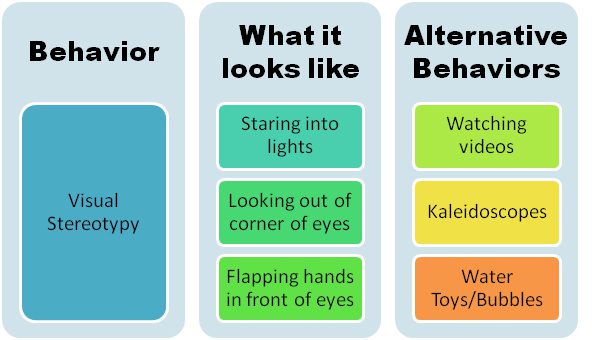Contents
Stereotypy
A stereotypy is a set of behaviors without apparent meaning, reproduced over and over again to the point of sometimes causing lesions. Certain stereotypies are present in the “normal development of the child”. Others can be caused by different disorders and treated with behavioral therapy.
What is stereotypy?
Definition
A stereotypy is a set of attitudes, gestures, acts or words without apparent meaning reproduced over and over again to the point sometimes of causing lesions.
Types
There are different ways of classifying stereotypies.
Some distinguish:
- Verbal stereotypies
- Gestural stereotypies
- Attitude stereotypes
Others distinguish:
- Motor stereotypies
- Self-stimulating stereotypies
- Self-aggressive stereotypies
Causes
Stereotypies are present in a transient way in the “normal” development of the child but tend to disappear with the acquisition of neuromotricity.
Stereotypy can be part of a Pervasive Developmental Disorder:
- Autism disorder
- Rett Syndrome
- Childhood disintegrative disorder
- Asperger’s syndrome, according to the DSM classification
In addition, stereotypies are common in people with the following disorders:
- Psychosis
- Certain forms of schizophrenia
- Gilles de la Tourette syndrome
- Impairment
- Frontal syndrome, set of symptoms and clinical signs observed in lesions of the anterior part of the frontal lobe
- Sensory deprivation
Finally, the occurrence of motor stereotypies can be associated with drug use, especially cocaine. Studies have shown that stereotypical behaviors are more severe among cocaine injectors.
Diagnostic
The term “stereotypy” is now designated – in the DSM-IV-TR for example – as: “Stereotypical movement disorder”. The diagnosis of Stereotypical Movement Disorder should not be made if the stereotypies are attributable to a Pervasive Developmental Disorder.
The diagnosis of these repetitive activities follows a complete process:
- Course of pregnancy and childbirth
- Family history search
- Observation of the psychomotor development of the child. Does he show mental retardation?
- Age of onset of the most intense stereotypical behaviors
- Circumstances in which stereotypies arise (excitement, boredom, loneliness, anxiety, schedules, post-traumatic …)
- Precise description of the phenomenon (duration, disturbance of consciousness, etc.)
- Family help to visualize the phenomenon (personalized digital camera)
- Examination of the child (behavioral disorders, dysmorphia, neurosensory deficit, general and neurological examination)
Stereotypies can be difficult to differentiate from other paroxysmal movements like tics and different types of seizures. In a certain number of cases, the EEG-Video is the most discriminating essential complementary examination to arrive at the diagnosis.
The people concerned
Stereotypies can appear at all ages, from the neonatal period to adolescence. They are seen with a very different prevalence, frequency, intensity and semiology depending on whether it is:
- Primary stereotypies. They concern children with normal psychomotor development. In this case, they are rare and not very intense. The most frequent are motor stereotypies.
- Secondary stereotypies. They concern children with one of the following disorders: neuro-sensory deficit, blindness, deafness, mental retardation, psychiatric pathologies, certain genetic, degenerative or metabolic diseases. In this case, the stereotypies are more severe and more frequent.
Symptoms of stereotypy
The symptoms of stereotypy are attitudes, gestures, actions or words without apparent meaning that are reproduced over and over again.
Common motor stereotypies
- Trunk swing
- Banging your head
- Thumb sucking
- Biting of the tongue and nails
- Hair twist
- Regular, rhythmic nodding
Complex motor stereotypies
- Hand tremor
- Foot deviation
- Clapping or shaking hands
- Finger contortion
- Arm flapping
- Flexion or extension of the wrists
Among the self-stimulating stereotypies, infant and young child masturbation is the most common.
Treatment of stereotypy
In the majority of cases, primary stereotypies have no psychosocial or physical repercussions, they do not require any treatment.
In the case of secondary stereotypies, behavioral and drug therapies can be considered on condition of having detected the associated pathology early, and having a good knowledge of it.
In children with visual or hearing sensorineural impairments, communication alternatives to their impairments can be created to prevent their behavior from becoming an obsession.
In autistic children, specialized educational programs and behavioral therapies, psychoanalytic psychotherapies, exchange and development therapy (PDD, etc.) are often used in the treatment of stereotypies.
Prevent stereotypy
No particular prevention other than the prevention of the causes.










